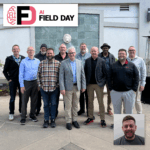|
|
This video is part of the appearance, “Articul8 Presents at AI Field Day 7“. It was recorded as part of AI Field Day 8 at 10:30-12:00 on October 30, 2025.
Watch on YouTube
Watch on Vimeo
Dr. Renato Nascimento, Head of Technology at Articul8, and Dr. Arun Subramaniyan, Founder and CEO, presented the technical architecture and capabilities of the Articul8 platform at AI Field Day 7. The platform is built to enable orchestration and management of hundreds or thousands of domain- and task-specific AI models and agents at enterprise scale, supporting both cloud and on-premises deployments on all major cloud providers. The core architecture leverages Kubernetes for elasticity, high availability, and robust isolation of components. Key elements include a horizontally scalable API service layer and a proprietary “model mesh orchestrator,” which coordinates dynamic, low-latency, real-time executions across a variety of AI models deployed for customer-specific workloads. Observability, auditability, and compliance features are integrated at the intelligence layer, allowing enterprises to track, validate, and meet regulatory requirements for SOC and other audit demands.
At the heart of the platform is the automated construction and utilization of knowledge graphs, which are generated during data ingestion without manual annotation. For example, Articul8 demonstrated the ingestion and analysis of a 200,000-page aerospace dataset, generating a knowledge graph with over 6 million entities, 160,000 topics, 800,000 images, and 130,000 tables. The system automatically identifies topics, clusters, and semantic relationships, enabling precise search, reasoning, and model flows (e.g., distinguishing charts from images, applying task-specific models for tables including OCR, summary statistics, and understanding content). This knowledge graph forms the substrate for supporting both the training and real-time inference of domain-specific and task-specific AI models. The Model Mesh intelligence layer breaks down incoming data, determines its type, and routes it through appropriate model pipelines for processing, ensuring that the architecture can support both large and small models as appropriate for the data and task complexity.
The platform also showcases advanced agentic functionalities such as the creation of digital twins—AI-powered proxies of individuals or departments—which can be quickly spun up from public or private data and progressively improved through feedback and additional data integration. In an illustrative demo, Articul8 built digital twins of AI Field Day participants and orchestrated live, multi-agent discussions on technical topics. The platform supports squad-mode interactions, wherein multiple digital twins can collaborate, offer opinions, revise answers, and converge or diverge in real-time analysis. All these actions are fully tracked and auditable, supporting enterprise security and access controls. The discussion outcomes are summarized and can be exported, making the platform suitable not only for typical enterprise Q&A and knowledge retrieval, but also for scenario planning, decision support, and collaborative agentic workflows in secure, controlled environments.
Personnel: Arun Subramaniyan, Renato Nascimento








